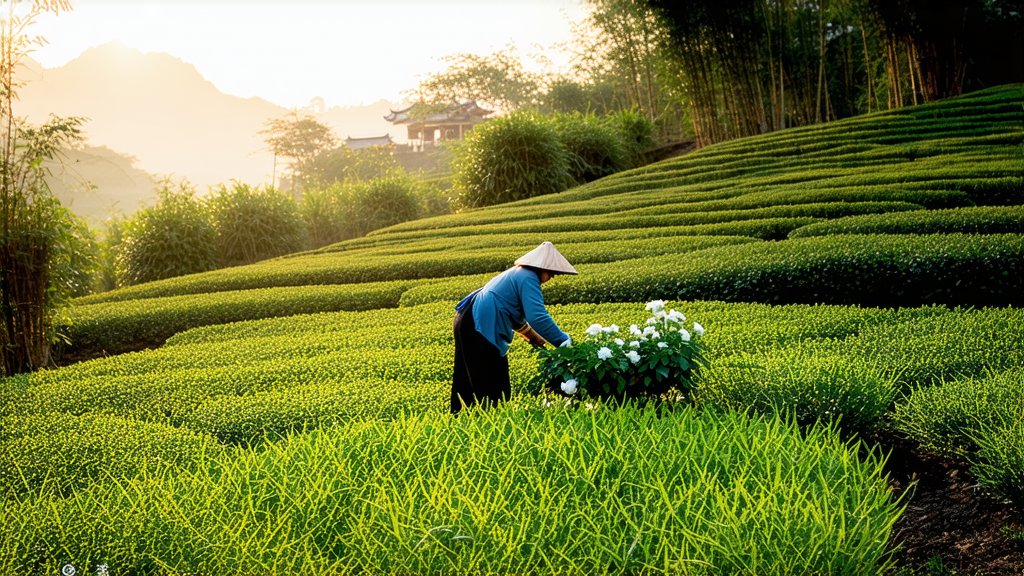
Nestled within the verdant hills of Fujian province lies a treasure that has captivated tea enthusiasts for centuries—the exquisite Fujian White Peony Tea, also known as Bai Mudan. This enchanting variety of Chinese white tea is a testament to the artistry and tradition that define China's rich tea culture. Join me on a mesmerizing journey through the history, varieties, intricate craftsmanship, and the art of appreciating this delicate brew.
Historical Roots:
The origins of Bai Mudan can be traced back to the early Qing Dynasty (1644–1912). Legend has it that this tea was discovered by chance when tea farmers, unable to meet the rigorous standards for producing high-grade white tea, allowed their tea plants to grow longer before harvesting. This serendipitous oversight led to the creation of a tea with unique characteristics that would become the beloved Bai Mudan. Over time, it gained royal favor and became an integral part of Chinese tea lore.
Varieties and Classification:
Bai Mudan, or White Peony, is one of the most celebrated types of white tea. It is distinguished by its downy silver and green leaves, which resemble the petals of a peony flower, hence the name. Unlike other white teas that are primarily made from buds alone, Bai Mudan includes both the young shoots and the first two leaves. This combination gives it a more complex flavor profile compared to its counterparts.
There are several grades of Bai Mudan, primarily differentiated by the proportion of buds to leaves and the fineness of the pekoe (downy hair) covering the leaves. The highest quality Bai Mudan features a generous amount of silver needles (buds) interspersed with whole leaves, creating a visually stunning and aromatic brew.
Craftsmanship: A Labor of Love
The production of Bai Mudan is a meticulous process that requires skill, patience, and a deep understanding of nature's rhythms. Here's a glimpse into the traditional method:
-
Plucking: The optimal time for harvesting Bai Mudan is during the spring months, typically between March and April. Only the youngest shoots and leaves are handpicked, ensuring they are covered with fine white down.
-
Withering: After harvesting, the leaves undergo a natural withering process. They are spread out thinly on bamboo mats or trays and left to wilt under the sun or in well-ventilated rooms. This step allows moisture to evaporate gradually, softening the leaves and initiating enzymatic reactions that contribute to its unique flavor.
-
Drying: Following withering, the leaves are carefully dried either by sun exposure or low-temperature oven drying. This step further reduces moisture content while preserving the delicate flavors and aromas.
-
Sorting and Grading: Once dried, the tea is sorted to separate different grades based on bud and leaf content. Higher-grade Bai Mudan will have a higher proportion of silver needles.
The Sensory Experience: Appreciating Bai Mudan
To truly appreciate Bai Mudan, one must engage all senses in a ritualistic manner akin to a meditative practice. Here's how to embark on this sensory journey:
-
Visual Appeal: Observe the dry leaves, noting their silver and green hues intertwined like threads of silk. As they unfurl in hot water, watch them dance gracefully, revealing their full elegance.
-
Aroma: Before taking a sip, inhale deeply to capture the subtle fragrance of Bai Mudan. Its scent is often described as floral with hints of honey, melon, and a whisper of fresh hay.
-
Flavor Profile: Take your first sip slowly, allowing the tea to coat your palate. Bai Mudan offers a harmonious balance of sweetness and umami, with a smooth texture and a lingering aftertaste that invites contemplation.
-
Mouthfeel: Pay attention to the tea's body; it should be light yet full-bodied, with a velvety mouthfeel that glides effortlessly across your tongue.
-
Aftertaste: Savor the lingering flavors post-sip. A high-quality Bai Mudan will leave a clean, refreshing finish that seems to echo the purity of its origins.
In conclusion, Bai Mudan is more than just a beverage; it embodies centuries of cultural heritage, artisanal mastery, and a profound connection to nature. Each cup tells a story of the land, the people who cultivate it, and the traditions that sustain it. As you indulge in this delicate elixir, allow yourself to be transported to the misty mountains of Fujian, where every sip is a testament to the enduring beauty and complexity of Chinese tea culture.